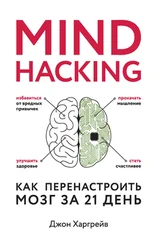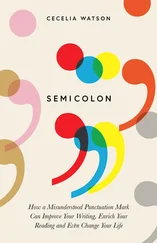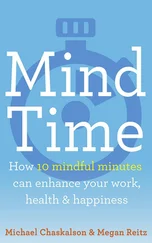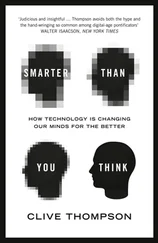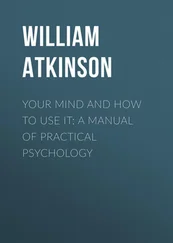He would then rush upstairs to his second, more modest office, where he did his true “inventing.” Here he would take the initial idea and sketch it out, making rough drawings of the idea that he wanted to pull into reality.
Next door to this office was a drafting room, where a team of draftsmen would take his ideas and begin drawing up formal plans. What parts would be needed? What materials would they be made of? Wrestling with these questions, with occasional input from the master, they would work up large-scale drawings from which the invention could now be built.
From there, the drawings went to a machine shop full of small electric tools. Frequently they needed to build machines to build the machines that would build the inventions. In this first shop, they could fabricate any small parts needed. These parts went below to a large-scale machine shop, a huge loft space filled with motorized pulleys, belts, and gears that could provide the power to manufacture the invention itself. Thomas Edison once bragged about his facility, “We can build anything from a lady’s watch to a locomotive.” 2
From an idea, to paper, to plans, to machining, to manufacturing, to a finished product: it was an early prototype of today’s R & D labs. I want to highlight what Edison did first when his mammoth mind presented him with an idea to feed into that amazing system. In order to turn that idea into a reality, he wrote it down .
There is a power and a magic in writing things down that we take for granted, because we do it so often. First, an idea is only in our mind, with no expression in the physical world. Then, with a few strokes of a pencil or a few awkward taps of our thumbs, that idea is now a thing . True, it may only be a representation of the thing, but it’s still here, in this world.
Writing is a bridge, or a gateway, between the world of mind and the world of matter. It’s how thoughts become things. It’s how an idea gets from our heads into our hands. While this may seem basic and obvious, think back to how often you have given yourself a resolution for self-improvement, or had a great idea to transform the world, and you did not write it down . Be honest: What was the result?
Take the goal of losing weight, for example. The World Health Organization estimates that 10 percent of people worldwide are obese, 3leading to increased risk of heart disease, strokes, diabetes, and some forms of cancer, the leading causes of preventable death. 4So a 2008 study funded by the National Institutes of Health recruited nearly 1,700 overweight people to experiment with a new approach to losing weight: food diaries .
In addition to education and collaboration, the secret weapon in this approach was keeping a food diary, with participants keeping a list of everything they ate, whether that be on a pad of sticky notes or a digital device. While common sense says that keeping a diary would not result in any meaningful weight loss, the participants found that knowing their food choices would be recorded— rather than eaten and forgotten— was a powerful motivator to make better choices. Further, they began to notice patterns in their eating that could only be appreciated when they could write them down and take the “meta” view.
The results were astounding. “The more food records people kept, the more weight they lost,” said the study’s author, Dr. Jack F. Hollis. “Those who kept daily food records lost twice as much weight as those who kept no records. It seems that the simple act of writing down what you eat encourages people to consume fewer calories.” 5
I have come to appreciate writing as a powerful and advanced technology, whether we’re scribbling it on a notepad or typing it on a keyboard. When we write down our ideas, thoughts, or resolutions, we have a record . As Jonah Lehrer put it in his book Imagine: How Creativity Works , “There was nothing. Now there is something. It’s almost like magic.” 6
Until it’s on paper,
It’s vapor.
The Book Before the Book
One of the first people to formally develop a plan for treating alcoholics was Dr. Richard R. Peabody. 7Peabody, you should know, was not a doctor, though he was an alcoholic, which was probably the more important requirement of the two.
Peabody was born in 1892 to one of the most distinguished families in Boston. The Peabodys were wealthy New England bluebloods, well connected with the social elite. He attended Harvard, and married Polly Jacob, who was not only the niece of banking magnate J. P. Morgan Jr. but had received a patent for the modern brassiere. When you’re not only connected with the Morgan family but married to the woman who created the bra, life’s pretty good.
Unless you’re an alcoholic. Peabody’s drinking became a habit at Harvard and intensified during his service in World War I. He squandered his wife’s inheritance on a shipping business, which failed. He drank more heavily, becoming violent and abusive, until finally his wife left him, taking her brassieres.
A broken man, he began attending meetings at a local church, where he developed his own technique of mind hacking. He eventually achieved sobriety and opened an office to help other alcoholics find sobriety as well; he helped so many, in fact, that they gave him the affectionate nickname “Dr. Peabody.” In 1931, he wrote a book titled The Common Sense of Drinking that outlined his techniques. The book not only became a best seller, but is a mind hacking classic.
He was one of the first to claim that “once an alcoholic, always an alcoholic,” and there’s no use in trying to drink more responsibly (despite what the beer commercials tell you). To Peabody, complete sobriety is the only option, and he warns of the dangerous tricks that your mind will play on you as you try to give up drinking. Much of his program involves consciously developing “new habits of thought” that will help mentally gird you when these inevitable temptations arise.
You must overrun the old thought habits with new ones, he says. In a technology analogy appropriate to his time period, he likens the mind to a muddy dirt road that is overrun by the hoofprints of horses and carriages. You can’t easily get rid of these mental tracks unless you drive through with a newfangled automobile, creating new tracks. The mind has a similar pliability: what modern researchers call neuroplasticity , or the ability to create new neural pathways in the brain.
To accomplish this “changing of the mind,” one of the fundamental techniques in Peabody’s book is for the recovering alcoholic to write down the next day’s schedule : every item that he or she wishes to accomplish, including both work and rest. He recommends writing down the day’s activities in detail, beginning from the time of arising and continuing until bed at night. Then, at the end of the day, the patient reviews the day’s schedule, then plans for tomorrow, again writing it down .
The purpose of the schedule is to change a negative loop (drinking, feeling terrible, and so drinking some more) into a positive one (making progress, feeling better, and so making more progress). Note the similarities with Benjamin Franklin’s Moral Perfection Project, where he reviewed his progress each day in adhering to his values, writing down whether the day was a success.
One of Peabody’s patients gives this testimonial about the virtues of writing down his daily schedule:
This issuance of small commands to myself and my obedience to them rapidly restored my self-respect. Incidentally my efficiency in my daily work enormously increased, which increased the respect for me of other people. This reacted favorably on my confidence in myself. In other words, by perfectly mechanical means I was enabled to turn what had been a vicious circle into a beneficent circle. The more pride I was able to take in myself, the less need I had of the rallying effect of alcohol when I went out. 8
Читать дальше
![Джон Харгрейв Mind Hacking [How to Change Your Mind for Good in 21 Days] обложка книги](/books/404192/dzhon-hargrejv-mind-hacking-how-to-change-your-min-cover.webp)


